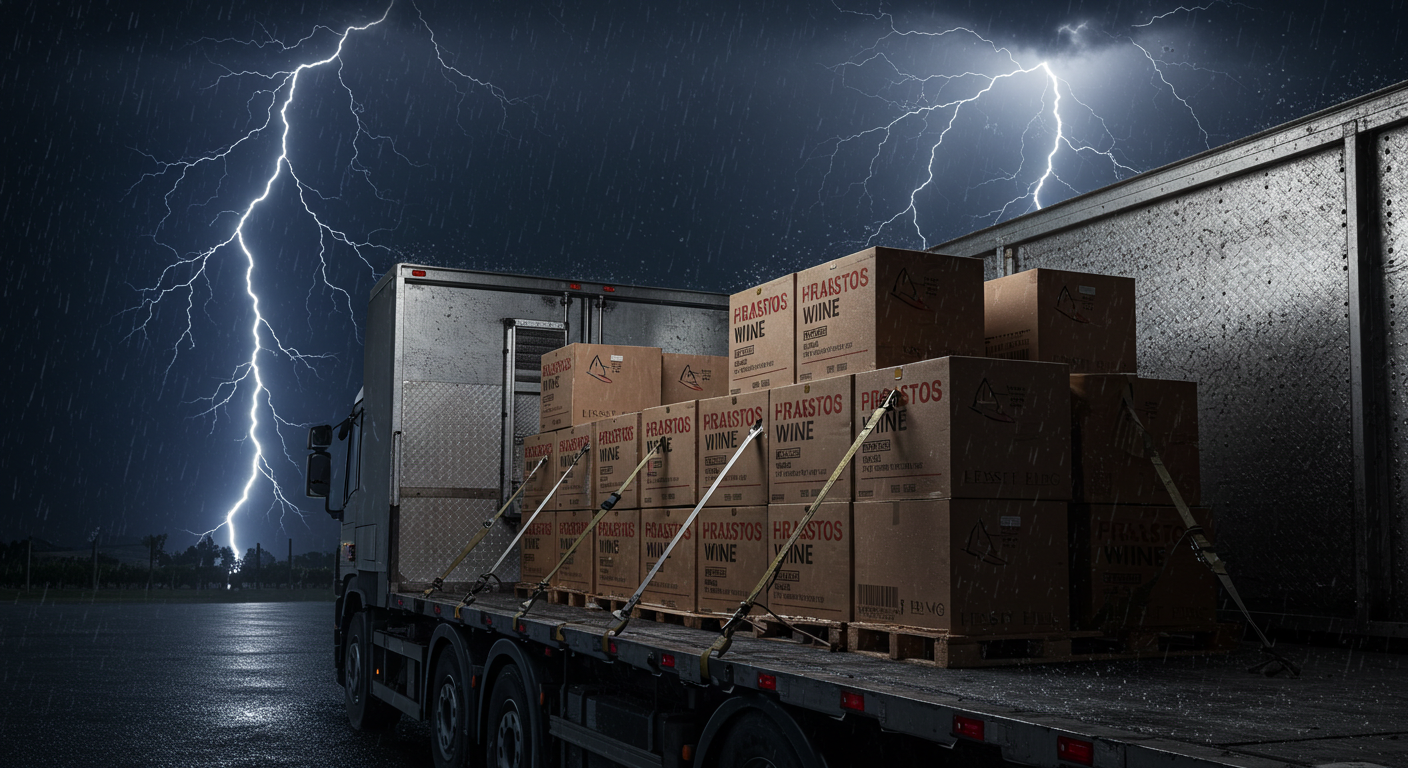
Shipping Wine During Extreme Weather
Transporting wine can be challenging even in typical circumstances, but extreme weather conditions—such as intense heat or severe cold—introduce additional difficulties.
Therefore, how can you guarantee that your wine shipments withstand extreme weather and reach their destination in optimal condition?
Let us discuss the solutions.

Why Weather Matters When Shipping Wine
Wine is delicate. It reacts to temperature shifts just like a carton of milk left in the sun—except instead of curdling, your wine can expand, contract, or even oxidize. Here’s what extreme temperatures can do:
-
Excessive Heat (Above 80°F/27°C): Wine can "cook," altering its flavor and aroma. Corks may also push out, causing leaks.
-
Freezing Cold (Below 32°F/0°C): Wine can freeze, expand, and crack the bottle or push out the cork. If thawed incorrectly, it may lose its original taste.
Now that we understand the risks, let's talk about how to protect your shipments.
How to Protect Wine Shipments in Extreme Heat
When temperatures soar, keeping wine cool is key. Here’s how:
1. Use Insulated Wine Shipping Boxes
Insulated wine shipping boxes act like a cooler for your bottles, helping maintain a stable temperature. Foam inserts, pulp trays, and thermal liners add extra protection.
2. Ship Early in the Week
Avoid weekend delays! If wine sits in a hot warehouse or delivery truck over the weekend, it could be ruined. Ship early in the week to minimize transit time.
3. Choose Temperature-Controlled Shipping
Carriers like UPS and FedEx offer temperature-controlled shipping services, ensuring your wine stays at a safe temperature throughout its journey.
4. Avoid Ground Shipping in Summer
Ground shipping takes longer and exposes wine to prolonged heat. Opt for air shipping to reduce the time your wine spends in transit.
5. Use Ice Packs or Gel Packs
Adding ice or gel packs can help maintain a cool temperature inside the box. Just be sure they’re properly wrapped to prevent condensation from affecting the packaging.
How to Protect Wine Shipments in Freezing Weather
Cold temperatures are just as dangerous as heat. Here’s how to prevent frozen wine disasters:
1. Use Insulated and Padded Packaging
Just like in hot weather, insulated shipping boxes help stabilize the temperature. Foam inserts and pulp shippers add an extra layer of protection.
2. Ship Overnight or Expedited
The faster the wine gets to its destination, the less time it spends in freezing conditions. Overnight or two-day shipping is your best bet.
3. Avoid Shipping Over Weekends
Wine left in a freezing warehouse or delivery truck over the weekend can freeze. Ship on Monday or Tuesday to ensure it arrives before the weekend.
4. Request "Hold for Pickup"
Some carriers allow customers to pick up packages directly from the shipping facility. This reduces the risk of wine being left outside in freezing temperatures.
5. Add Thermal Wraps or Heat Packs
For extreme cold, thermal wraps or heat packs can help maintain a stable temperature inside the box.
Additional Tips for Year-Round Wine Shipping
-
Check the Weather Forecast: Always check the forecast for both the shipping and destination locations before sending wine.
-
Communicate with the Recipient: Make sure someone is available to receive the package so it’s not left outside in the elements.
-
Label Packages Properly: Clearly label wine shipments as "Perishable" or "Fragile" so carriers handle them with care.
Final Thoughts
Extreme weather doesn’t have to ruin your wine shipments. With the right packaging, shipping methods, and planning, you can ensure your wine arrives safely—no matter the temperature outside.
Looking for the best wine shipping boxes to keep your bottles safe? Check out our collection of insulated wine shippers and packaging solutions today!

